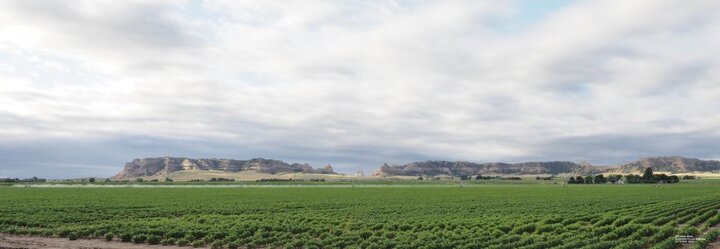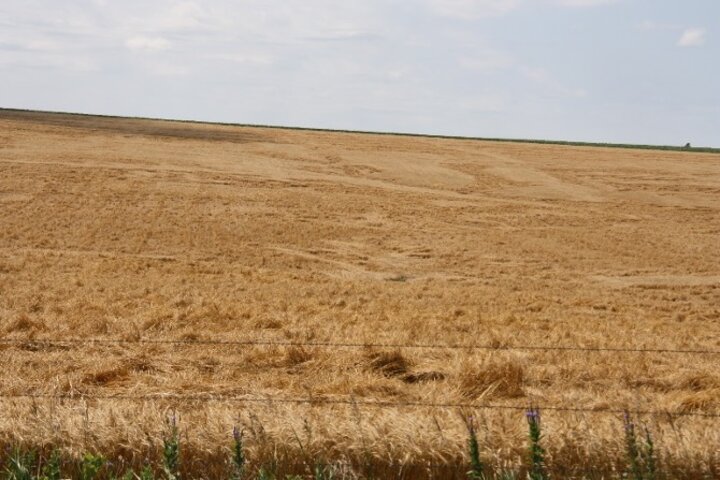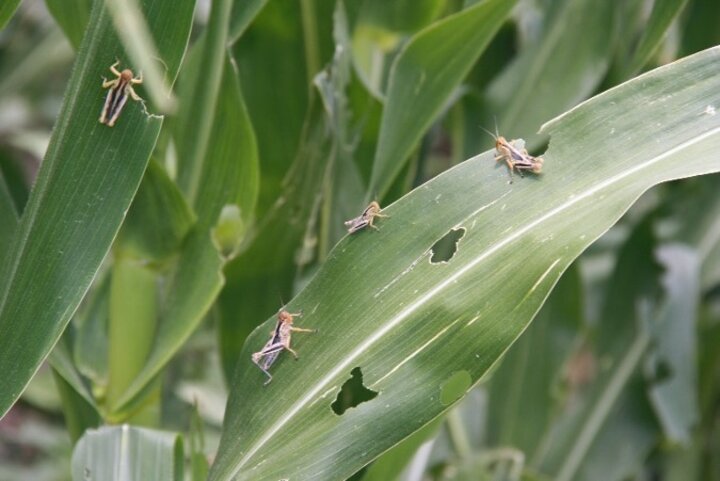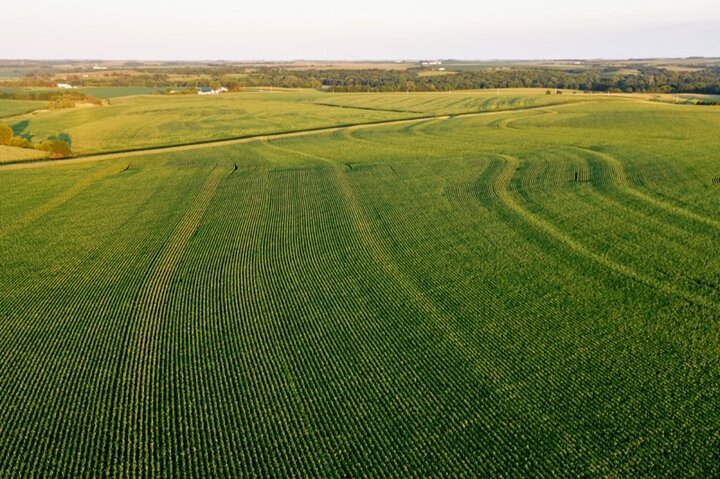Sarah Sivits
Extension Educator Dawson, Buffalo and Hall Counties
We had a hail storm rip through Dawson County last week that ranged anywhere from minimal damage to 100% loss. Soybeans are flowering and we are just starting to see pods begin to develop on early flowering beans. Corn is in late vegetative to early tassel. Oats are still being swathed and baled as is second cutting of alfalfa. We have had a few much needed showers across the area as it was getting dry. Lots of aerial applicators are out spraying fungicides and some insecticides. Japanese beetles are present and we are keeping an eye out for western bean cutworm in the fields. (7/14/20)
Gary Stone
Extension Educator in the Panhandle
All of the crops are doing well in spite of the high temperatures and some hail in the northern Panhandle. Corn is close to tasseling in most areas, sugar beets are near full cover. Dry edible beans are reaching full cover and will start to bloom soon. Winter wheat harvest is starting with yields below expectations in some areas. Field pea harvest will begin soon. Millet and sunflowers have been planted and are progressing normally at this time. Most producers with alfalfa are starting their second cutting. Potatoes are proceeding normally. Rangeland grass and pastures are starting to cure out and have posed a fire hazard some days when temperatures and high winds occurred. Grasshoppers are the main pest concern with no disease issues at this time.
Irrigation water for the North Platte Valley in the Panhandle is sufficient for this growing season. Irrigators under the Goshen / Gering-Ft Laramie irrigation districts have water in the canal again, but are restricted to 75-85 per cent of normal deliveries. See the tunnel collapse update for 2020 for more information. (7/15/20)

Ron Seymour
Extension Educator Webster and Adams counties
Stormy weather from the previous day provided some needed moisture in the southern part of Webster County but the accompanying high winds caused plant damage.
Wheat fields were mature and harvest was underway. Harvest varied with some fields complete, some in progress, and some waiting for the combine. Wind damaged plants were noticed in a number of fields that will result in harvest delays (Photo 1).
Field corn development ranged from the 12 leaf stage to tassel emergence. Several fields had quite a few small grasshoppers both within the field and higher numbers on the borders (Photo 2). Several corn fields had some green snap and plants blown to the ground. A few fields also had plants with noticeable gray leaf spot infection.
Soybeans were beginning to bloom and generally looked good. Plants in numerous fields exhibited moderate herbicide injury. As with the corn, there were also fields with a moderate to high number of grasshoppers. (7/15/20)


Laura Thompson
Extension Educator in Southeast Nebraska
Corn is tasseled and is looking very good due to excellent rains throughout the season. This past week most areas received between 2 and 5 inches of rain. Hill ground is looking especially good (Photo 1). Bottom fields are more variable with some water standing and nitrogen loss evident (Photo 2, 3). There has been some wind damage (green snap and goose necking) but not widespread. Gray leaf spot has taken off in the last week, progressing quickly above the ear leaf in some fields. Some common rust and northern leaf blight are also present. Many corn fields are being flown for fungicide and insecticide.
Soybeans range from R2 to R3. Japanese beetles have been heavy in many fields and lots of fields are being sprayed (Photo 4) so there are lots of planes flying in the area. (7/17/20)




